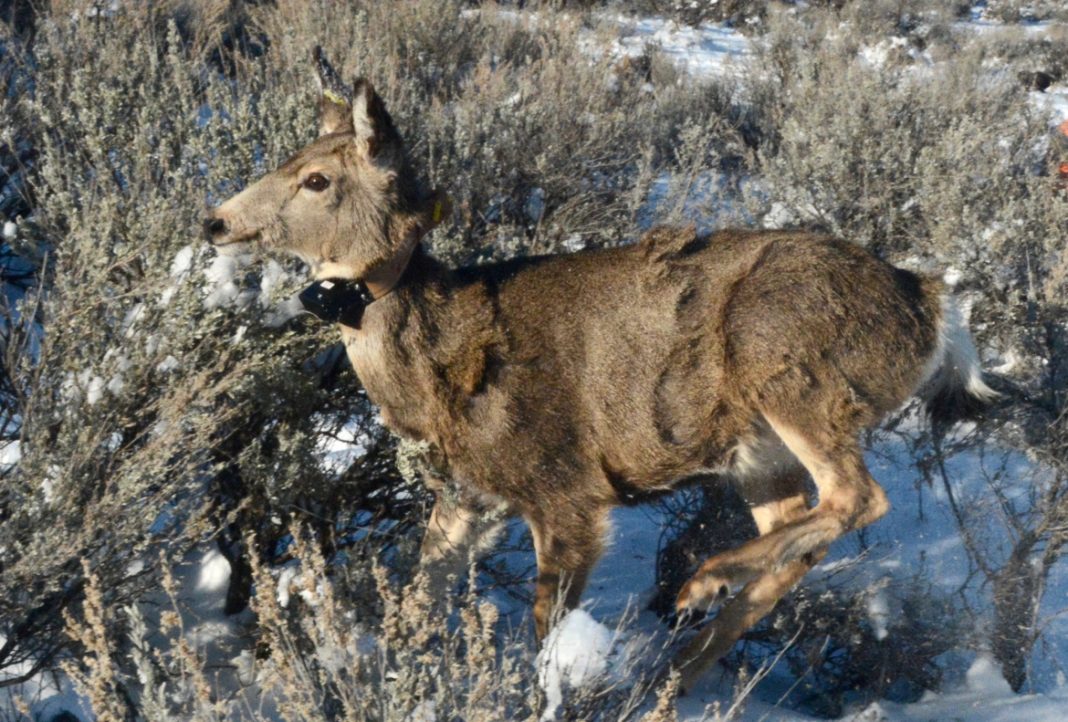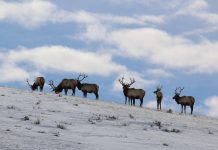The Idaho Fish & Game (IDFG) has announced that winter survival rates for elk and deer are looking slightly above average. From data that was collected at the beginning of the month, both radio-collared fawn and calf survival rates are looking good. Overall, 84 percent of fawns have survived through February. Likewise, 92 percent of calves with tracking collars have survived as well.
In the early winter, IDFG officials captured 222 mule deer fawns and 201 elk calves. All of these animals had their health checked and were radio-collared. As warmer weather starts to return to parts of the state these survival rates are encouraging. However, April and early May can be the hardest time for these young animals. Unseasonably cool spring weather can be devastating to fawns and calves. Likewise, animals’ fat reserves are largely depleted and their digestive systems need time to convert to digesting fresh, green forage. As a result, IDFG officials will continue to monitor the data well into the spring.
“From a statewide perspective, winter survival is tracking very close to what we saw in the past two years. If we continue on that trajectory, that’s good news because we ended up with above-average winter survival in both 2019-20 and 2020-21. – Toby Boudreau, Deer and Elk Program Coordinator for the Idaho Fish and Game.
Years of Survival Rates
Over the last five years, survival rates have been steady. That is a good sign as the deer herd recovers from the devastating winter of 2016-2017. Below we will list the survival rates for the last few years. The first number will be for fawns the second will be for calves:
- 83 and 92 percent in 2020-21.
- 84 and 92 percent in 2019-20.
- 78 and 93 percent in 2018-19.
- 88 and 91 percent in 2017-18.
- 55 and 80 percent in 2016-17.
“At this stage, how soon winter truly ends, and how soon we start to see that spring ‘green-up’ on south-facing slopes is really the critical factor. If we continue to have warm, sunny weather through March and April, we should see survival numbers come in similar the past two years and above the long-term average.” – Toby Boudreau, Deer and Elk Program Coordinator for the Idaho Fish and Game.
As you can see by the above survival rates listed above the deer herd took 2016-2017 hard. However, even the elk calves were down 10% of average that year. Fawn and calve survival are crucial for healthy herds. Likewise, a low fawn survival rate has a direct effect on fall deer harvests. This is due to the fact that the majority of deer harvested each year are yearling bucks.
You can read more about this data by clicking here. You can also check out our Idaho hunting news page by clicking here.















